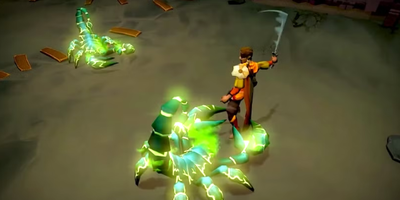الفئات
- جميع الفئات
- المختبرات الطبية
- طب الأسنان
- المستهلكات الطبية
- الدواء
- الطب
- الأجهزة طبية
- التجميل والصالون
- أخرى
العلامات
-
#RuneScape gold
#Diablo 4 Items
#buy POE2 Currency
#Buy Diablo 4 materials
#Path of Exile 2 Currency
#buy POE 2 Orbs
#Diablo 4 materials
#POE 2 Orbs
#POE 2 Currency
#POE2 Trade site
#cheap CFB 26 coins
#buy CFB 26 coins
#College Football 26 Coins for sale
#Diablo 4 materials for sale
#cheap MLB The Show 25 Stubs
#RS gold for sale
#buy MLB Stubs
#poe 2 trade
#poe2 trade
#buy RS gold
#cheap RS gold
#POE 2 Currency for sale
#Buy College Football 26 Coins
#buy d4 mats
#POE 2 Divine Orbs for sale
#MLB Stubs for sale
#buy MLB The Show 25 Stubs
#MLB The Show 25 Stubs for sale
#OSRS Accounts for sale
#buy OSRS items
#cheap POE2 Currency
#NCAA Football 26 Coins for sale
#RuneScape gold for sale
الأرشيف
rsorder: How to Collect RuneScape Gold Efficiently Despite Chal
-
Understanding the Value of OSRS Gold
Before diving into how much effort it takes, it’s important to RuneScape gold understand what OSRS gold represents. In RuneScape’s economy, gold isn’t just a number — it’s a form of progression. Having enough gold means faster skilling, easier bossing, and greater freedom in how you play.
The in-game economy is player-driven, meaning prices for items fluctuate based on supply and demand. Because of this, the time required to make gold can vary greatly. For example, killing Zulrah might make you 2–3 million GP per hour, while low-level activities like fishing lobsters or cutting yews might yield only 100–300k GP per hour.
Ultimately, your gold-per-hour rate — and thus your overall effort — is directly tied to your skills, gear, and knowledge of the best money-making methods.
The Early Game: The Struggle for First Millions
For new players, making gold in OSRS can feel like climbing a steep hill. Without strong combat stats or access to high-level skilling methods, you’ll often rely on simpler money-makers.
Here are some early-game methods and their typical earnings:
Mining Iron Ore – Up to 100k GP/hour.
Fishing Lobsters or Swordfish – Around 150k GP/hour.
Killing Hill Giants for Big Bones and Limbs – Up to 200k GP/hour.
Crafting Air Runes with Rune Essence – 50–100k GP/hour.
At this stage, players are learning the mechanics of the game and slowly accumulating resources. Even earning your first 1 million GP can take 5–10 hours of gameplay — a true milestone for beginners.
This early grind isn’t just about the gold itself — it’s about building up skills that will later unlock better money-making options. Every skill level you gain and quest you complete expands your access to higher-tier content.
The Mid-Game: Efficient Gold Grinding Begins
Once you’ve built up your combat stats and unlocked better gear, the pace of gold generation changes drastically. Mid-game players can start earning 500k to several million GP per hour, depending on their activities and efficiency.
Some of the most popular mid-game money-making methods include:
Barrows Runs – 500k–1.5m GP/hour (depending on RNG and gear).
Slayer Tasks – 500k–2m GP/hour plus valuable Slayer XP.
Bossing (e.g., Giant Mole, Sarachnis, Vorkath) – 1–4m GP/hour.
Crafting and Herblore Training for Profit – 1–2m GP/hour if market conditions are favorable.
At this level, efficiency and time management start to matter more than raw grinding. Players often begin tracking profit-per-hour and learning how to use the Grand Exchange strategically — buying low, selling high, and flipping items for passive income.
Getting to your first 10 million GP at this point could take 10–20 hours of focused grinding, depending on how skilled and consistent you are.
The Endgame: High-Level Profits and Passive Income
Once you reach higher combat levels (90+ stats) and have access to top-tier gear like the Twisted Bow, Scythe of Vitur, or Tumeken’s Shadow, gold-making in OSRS transforms from a grind into a science.
High-level players can earn anywhere from 5 million to 20+ million GP per hour depending on their activities:
Raids (Chambers of Xeric, Tombs of Amascut, Theatre of Blood) – 5–20m GP/hour based on drops and efficiency.
Bossing (Nex, Corporeal Beast, God Wars Dungeon) – 3–10m GP/hour.
Flipping on the Grand Exchange – Variable, often 1–10m GP/hour for skilled traders.
Skilling with Efficient Methods (Runecrafting, Herblore, Construction) – 1–3m GP/hour.
However, reaching this point requires hundreds or even thousands of hours of training, questing, and experience. The average player will spend over 1,000 hours in OSRS before comfortably sustaining high-end profits.
At this stage, effort isn’t just about grinding monsters — it’s about buy RS gold managing your time, learning optimal boss rotations, using plugins and timers effectively, and mastering the OSRS economy.
